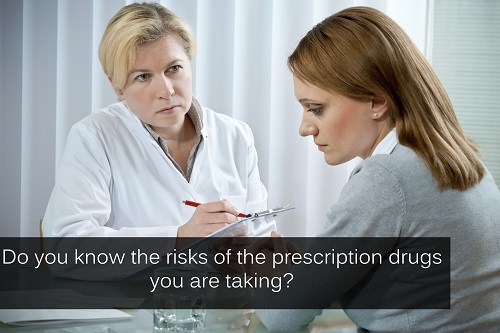30 Apr 2013
Somatic Symptom Disorder | Mental Health Rehab
New Diagnosis of Somatic Symptom Disorder Sparks Controversy
Somatic symptom disorder (SSD) is the name of a newly defined mental health condition that appears in the May 2013 fifth edition of the Diagnostic and Statistical Manual of Mental Disorders, or DSM, a standard guidebook used by mental health professionals throughout the United States. The new disorder fully or partially replaces several other conditions, known collectively as somatoform disorders, included in the previous version of the DSM. People with SSD have distressing or disruptive symptoms of somatic illness, a term that doctors generally use to describe physical ailments that have no explainable physical cause. However, controversially, the SSD definition lets doctors diagnose the disorder even when a plausible physical explanation for their patients’ symptoms exists.
 Background Information
Background Information
The Diagnostic and Statistical Manual of Mental Disorders is the creation of an organization called the American Psychiatric Association. Committees of mental health professionals within this organization meet periodically to discuss new developments in mental health research, compare those developments with the current accepted norms of the psychiatric community, and decide whether they need to update the accepted norms in order to incorporate relevant information from the new findings. The decisions made by these committees are included in fully or partially revised updates of the DSM and publicly released. In addition to doctors, public health officials and insurance companies typically closely follow the criteria established by the latest DSM version.
Somatoform Disorder Basics
According to the newly outdated version of the DSM, known as DSM IV or DSM 4, somatoform disorders exist as a group of related conditions, all of which revolve around the presence of physical symptoms with mental or psychiatric origins. The full list of these conditions includes somatization disorder, which centers on chronic physical symptoms appearing in multiple parts of the body; conversion disorder, which centers on symptoms affecting the nervous system; pain disorder, which centers on the presence of severe pain; hypochondriasis (known commonly as hypochondria), which centers on a fear of having or contracting a serious physical ailment; and body dysmorphic disorder, which centers on a fixation with the “disfiguring” effects of minor or entirely self-perceived physical flaws.
The new version of the DSM, called DSM 5, eliminates somatization disorder, pain disorder and hypochondriasis as diagnosable mental disorders. It also eliminates another related condition called undifferentiated somatoform disorder. The American Psychiatric Association committee that made these changes gave several reasons for their decision. First, they wanted to do away with the considerable overlap in symptoms between different somatoform disorders. They also wanted to make it easier for non-specialist doctors to make appropriate diagnoses in their patients. In addition, they wanted to curb a tendency among doctors to treat the mind and body aspects of somatic symptoms as separate medical issues.
Somatic Symptom Disorder Basics
The newly established definition for somatic symptom disorder resembles the definition for somatization disorder in certain respects. Like somatization disorder, SSD centers on the presence of somatic symptoms that disrupt a person’s normal lifestyle. However, a person with SSD also experiences extreme or excessive degrees of emotional distress and has a preoccupation with his or her physical symptoms that manifests as a significant change in his or her behaviors, feelings, or thought processes. These combined symptoms must recur consistently for about six months.
To receive a diagnosis for one of the eliminated somatoform disorders, an individual needed to have a certain number of symptoms that came from four different categories or groups. The definition for SSD does away this requirement. Critically, the definition for SSD also gives doctors the freedom to diagnose the presence of the disorder even if a patient has a medical condition that substantially accounts for his or her symptoms.
Concerns in the Medical Community
Some mental health experts disagree with the validity of the terms used to define somatic symptom disorder. This disagreement typically focuses on the freedom that doctors have to diagnose the condition in people who have reasonable medical explanations for their somatic symptoms. Many experts believe that this freedom will lead to over-diagnosis of SSD, and also unnecessarily stigmatize certain physical ailments as the products of mental health problems. A recent field trial of the new SSD definition highlights some of these issues. During this trial, 7 percent of physically healthy individuals were misdiagnosed with SSD; in addition, 15 percent of all trial participants with heart disease or cancer—and 26 percent of all participants with fibromyalgia or irritable bowel syndrome—qualified for an SSD diagnosis.
29 Apr 2013
Prescription Opioid Abuse and Risks for Suicide
Prescription opioids are a group of medications commonly used to treat forms of pain that don’t respond to other types of medication-based treatment. Because of certain changes they make in normal brain function, these medications present a very real risk for both abusive patterns of use and drug addiction; in turn, both prescription opioid abuse and prescription opioid addiction create increased risks for suicidal thinking and active suicide attempts. According to research findings reported in 2012, elevated suicide-related risks commonly remain in long-term opioid abusers and addicts even when they discontinue drug use.
Prescription Opioid Basics
All prescription opioids are based on substances that occur naturally in Papaver somniferum, a plant species popularly known as the opium poppy. Two of these medications, morphine and codeine, come more or less directly from ingredients contained in the sap of P. somniferum. Two other common prescription opioids, hydrocodone (Vicodin, Lortab), and oxycodone (OxyContin), are created in pharmaceutical laboratories through chemical manipulation of naturally occurring opioid substances. Three additional common opioid medications—fentanyl (Fentora, Actiq), synthetic codeine, and meperidine (Demerol)—are manmade substances designed to chemically resemble the natural opioids.
Each prescription opioid medication has its specific typical role in medical treatment. For instance, doctors typically use codeine to relieve relatively moderate pain or ease the effects of medically serious coughing or diarrhea. Morphine is commonly used to relieve severe pain in surgical settings, while doctors use hydrocodone and oxycodone for a range of conditions involving moderate to severe pain. Regardless of their particular common use, all prescription opioids (and illegal opioid drugs) achieve their pain-relieving effects in a similar way by entering the body and attaching themselves to sites in the nervous system called opioid receptors. When activated by the presence of opioids, these receptors help override pain signals traveling through the nervous system to the brain.
When opioids attach themselves to opioid receptors located in the brain, they produce an additional effect by triggering a dramatic increase in the levels of a brain chemical called dopamine; in turn, this dopamine increase produces intense pleasure. In prescription users, opioid abuse and addiction typically become issues when a given individual seeks out this pleasure as a recreational activity and increases his or her level of intake above the level sanctioned by a doctor. This situation differs fundamentally from the situation of prescription users who follow their doctors’ orders and come to depend upon opioids’ legitimate pain-relieving effects.
Suicide-Related Risks
Unfortunately, suicidal thinking and active suicide attempts are found among prescription opioid abusers and addicts with some regularity. In 2012, researchers from the American Psychiatric Institute for Research and Education examined suicide-related factors in almost 38,000 participants in a study called the 2009 National Survey on Drug Use and Health, which was conducted by the U.S. government’s Substance Abuse and Mental Health Services Administration.
These researchers found that about 15 percent of the survey respondents had misused a prescription opioid medication at least once. They also found that roughly 11 percent of all people who had misused prescription opioids for at least two years had considered suicide in the year before the survey. In addition, roughly 9 percent of all people who had misused these medications for less than a year had considered suicide during the same period of time. By comparison, only 3 percent of people who didn’t use prescription opioids considered suicide in the year before the survey.
The authors of the American Psychiatric Institute for Research and Education’s study noted several factors that help determine the risks for suicidal thinking in people who misuse prescription opioids. The most prominent factor is a level of misuse that qualifies for standard definitions of drug abuse or drug addiction; fully 23 percent of survey participants with suicidal thoughts self-reported this degree of medication misuse. Another important factor is the presence of symptoms consistent with a diagnosis of the psychiatric disorder known as major depression. In addition, the authors of the study concluded that the risks for suicidal thinking don’t end with the discontinuation of opioid use, and former long-term users continued to exhibit suicidal thought patterns significantly more frequently than people who have never used prescription opioids.
About 18 percent of all current prescription opioid users/abusers who considered suicide actually went on to make active suicide attempts, while 7 percent of former users/abusers with suicidal thoughts attempted suicide. By comparison, 11 percent of survey participants with suicidal thoughts who never used a prescription opioid attempted to kill themselves.
29 Apr 2013
Doctors Abusing Prescription Medication
According to Consumer Watchdog, one in 10 physicians abuse prescription medicines at some point in their career, and still continue to practice medicine. The situation is reminiscent of the TV series “House M.D.,” which features a Vicodin-addict doctor continuing to practice medicine despite his friends and colleagues being well-aware of his problem. Unfortunately, unlike the fictional Dr. House, most real doctors have a more hands-on role and don’t have borderline superhuman intelligence to fall back on, and therefore put themselves and their patients at considerable risk. You might be more familiar with the issue through prime TV programming, but it’s a real issue that requires immediate management.
Are Doctors More Likely to Abuse Prescription Medicines?
Although the rates of illicit drug use among practicing physicians is lower than in the general population, research has shown that prescription medicine abuse is five times more likely in doctors. Prescription drug abuse is currently at epidemic levels in the U.S., causing more overdose deaths than heroin and cocaine combined, and doctors are overrepresented in the population of people abusing the drug. This is often allowed to continue without the doctors losing their medical licenses, in some cases even after multiple disciplinary hearings.
What are the Potential Causes?
It’s easy to see that a big part of this is likely to be related to doctors’ increased access to potentially addictive substances. This is shown by the fact that anesthesiologists (doctors who have wide access to substances such as opioids) are generally more likely to abuse prescription drugs than doctors in other specialties. Simply, the fact that they are more closely connected with potentially dangerous substances makes them more likely to take them and become addicted. However, it’s clear that this isn’t the whole picture, because oncologists, for example, have low rates of substance abuse but high level of access to potentially addictive substances.
The other major component of the problem is that many doctors are able to continue practicing even if they have a recognized issue. In addition to the lack of preventive action being taken as part of disciplinary proceedings, most hospitals don’t routinely test doctors for drugs, which means that the problem is likely to continue unchecked for longer. There is also a suggestion that doctors would rather speak to their colleagues personally rather than taking the issue to the proper disciplinary channel, particularly if their punishment is likely to be severe.
Doctors’ lives are also inherently stressful, and since stress management issues are one of the most common reasons people take drugs, this evidently has some part to play in the issue. In combination with easy access to drugs and a supposed understanding of the risks, doctors under stress are believed to be more likely to turn to prescription medicines.
What Can Be Done?
Doctors appear to be at increased risk of developing a prescription medication addiction, but they respond to treatment like any other substance abusers. Of the approaches that have been shown to be effective are Physician Health Programs, with 78 percent of physicians enrolled in one over the course of a five-year period remaining drug-free at every scheduled test. Other studies have shown that 91 percent of physicians enrolled in the programs achieved a positive treatment outcome.
Education about the risks of substance abuse is also essential. While doctors know about the potential risks of medicines like OxyContin, they may incorrectly believe they can keep them under control and use the drug safely. Ensuring that doctors, patients and anybody with access to potentially harmful medicines understands the risks of addiction to prescription medicines is essential to resolving the issue.
It’s also possible that stricter regulations regarding physician substance abuse could be a valuable approach in reducing its prevalence. Such a low proportion of doctors are regularly tested for drugs that the problem is allowed to continue bubbling away beneath the surface. Other doctors who have colleagues abusing substances are often reluctant to report it and believe that the individual’s ability to do the job isn’t impaired. While it’s inevitably difficult to potentially damage a friend’s career, the harm that could be done to a patient as a result should be the main factor they consider.
Conclusion
Doctors do have higher rates of prescription medication abuse than the majority of the population, but it’s important to remember that it’s still an issue for the population as a whole. Being relaxed about a friend, colleague or loved one’s addiction because it happens to be to a legal substance is potentially dangerous, particularly if he or she could seriously harm someone else as a result. With proper treatment and education, however, addicted individuals can be rehabilitated and new cases of addiction can be prevented.
Narcissism is a term psychologists and psychiatrists use to describe the combined presence of personality traits such as self-absorption, grandiosity, and an unrealistic sense of personal importance. Some aspects of narcissism can play a healthy role in a person’s life, while other aspects tend to produce social and interpersonal problems. In their worst form, narcissistic traits can manifest as a diagnosable mental health condition called narcissistic personality disorder. According to the results of a multi-university study published in 2012 in the journal PLOS ONE, narcissism produces significantly more negative health effects in men than it produces it women.
Narcissism Basics
Most psychologists and psychiatrists agree that a limited amount of narcissism can play a positive role in a person’s everyday life, both during the developmental stages of childhood and later on during adulthood. Experts in the field sometimes refer to this positive influence as adaptive narcissism. People who engage in adaptive narcissism can receive such benefits as an increased tendency to exercise, improved academic performance, an improved rate of recovery in the aftermath of a traumatic injury, improved or broadened employment opportunities, self-sufficiency in intimate relationships and improved parenting skills.
While adaptive narcissism can be beneficial on both a personal and social level, unlimited or maladaptive narcissism can have the opposite effect. Tendencies associated with unhealthy narcissism include an inability to hear the concerns of others, lack of empathy for others, an inability or unwillingness to take responsibility for one’s actions, an inability or unwillingness to take responsibility for one’s emotional states, and an unusual sensitivity to real or perceived criticism. The authors of the study in PLOS ONE break narcissism down into five personality traits, three of which tend to produce healthy narcissism and two of which tend to produce unhealthy narcissism. The three traits associated with healthy narcissism are self-absorption/self-admiration, leadership/authority and superiority/arrogance. The three traits associated with unhealthy narcissism are entitlement and exploitativeness.
Narcissism in Men
After reviewing their results, the authors of the study concluded that men and women with high scores for healthy or adaptive narcissism don’t experience significant increases in their cortisol levels. This finding indicates that adaptive narcissism does not produce stress. However, men with high scores for unhealthy narcissism do experience significant cortisol increases, and therefore experience substantial increases in their stress levels. In line with this finding, the highest levels of cortisol elevation occur in men who have the highest level of involvement in unhealthy narcissism. Interestingly, women with high levels of unhealthy narcissism experience less than half of the cortisol elevation that occurs in their male counterparts.In the study published in PLOS ONE, researchers from the University of Michigan and the University of Virginia used a 40-question questionnaire to determine the narcissism levels in a group of 106 adult undergraduate students. They also used saliva tests to check these students’ levels of a substance called cortisol. Cortisol is the body’s most important stress hormone, and when its level in the body increases, affected individuals experience mental symptoms of stress such as fear and anxiety, as well as a variety of physical stress-related effects.
Significance
Chronic stress is associated with increased risks for such things as depression, memory problems, sleep disturbances, obesity and heart disease. The men and women who participated in the study published in PLOS ONE did not undergo any stress-increasing experiments before having their cortisol levels checked. Instead, their cortisol levels reflected the amounts of stress they experience during everyday life. The authors of the study believe that this fact indicates that men with unhealthy forms of narcissism are regularly exposed to unique risks to their mental and physical well-being.
Social stereotyping may help explain the negative impact of unhealthy narcissism in men, the authors of the study note. For example, many of the common social definitions for “manliness” coincide with the personality traits of narcissism. If any given man with generally healthy narcissistic traits tries to live out the social expectations for males, he will probably not suffer any major negative consequences. However, if a man with generally unhealthy narcissistic traits tries to live out the same set of expectations, he can reinforce his damaging narcissistic behaviors and end up dangerously boosting his stress levels. As plausible as this sounds, it’s currently just a theory. Researchers will need to make additional studies before they can truly explain why unhealthy narcissism has such a strong impact on men.
24 Apr 2013
Drug Addiction ‘Turned Off’ With Lasers
A groundbreaking study on rats from the National Institutes of Health may herald a revolutionary new treatment for cocaine addicts. By identifying a specific region of the brain that is diminished in rats susceptible to cocaine addiction, researchers were able to reduce their drug-seeking behavior by targeting the light from a laser onto the specific area. The effect is truly remarkable—by essentially reinvigorating the area in the brain, the drug-seeking behavior was notably reduced. If this is applied effectively to humans, it could provide a unique and effective approach to the treatment of numerous drug addictions.

Modeling Addiction in Rats
Research on rats might not seem like the best model for drug addiction in humans because of the obvious differences between us as species. However, it’s been found that the neural pathways in rats are nearly identical to those in humans, so rats are actually excellent models for addiction. Like humans, some rats display a tendency to become addicted to drugs while others don’t have the same problem. This is tested using a cocaine-dispensing lever, and it was found that some rats compulsively take cocaine while others weren’t particularly interested. The fact that the addicted rats continue to push the lever to get the drug even when it results in an electric shock to the foot further adds weight to the model. This research indicates that there is an underlying physiological reason that some humans become addicted and some do not.
Identifying the Region
The University of California researchers built on existing brain imaging research which identified that deficits in the pre-frontal cortex region were associated with drug addiction by looking at addicted rats. They compared the neuron firing patterns in addicted rats to those of non-addicted rats and confirmed that cocaine produces bigger defects in the addiction-prone animals. The precise targeting of the region enabled them to make specific alterations to see if it affected the animals’ behavior.
Treating the Condition
Making minute alterations to the functioning of specific areas in the brain is obviously challenging and potentially dangerous. By making genetic alterations and introducing light-sensitive compounds into the rats’ neurons, the researchers were able to make the biological equivalent of a switch. They did this in the brains of both the addicted and non-addicted rats so they were able to test the theory in two ways. Shining a laser light at the compound flicks the switch, activating or deactivating the specific region of the brain and therefore either creating or removing the defects seen in drug addicts.
The results confirmed the theory. When the “switch” was activated in the addicted rats—removing their inherent deficits—they didn’t press the lever as often for a dose of cocaine. Astoundingly, when the switch was deactivated in the non-addicted rats (mimicking the addicted brain) they actively used cocaine more. This is particularly important because it establishes a causal link between this defect and addictive behavior.
Applying it to Humans
Thanks to the similarity between human and rat brains, the research can be easily applied to humans, and clinical trials are already in the planning stages. However, lasers will probably not be used in the human version of the treatment, according to the researchers, with the preferred method being trans-cranial magnetic stimulation. This basically uses an electromagnet placed outside the scalp to achieve the same effect. The treatment is currently used for the treatment of depression, and could be easily adapted for the new purpose.
What Does It Mean for Treatment?
Cocaine addiction is one of the most challenging addictions to treat from a medical perspective, because there aren’t any FDA-approved medications which can be used for it. If this approach is shown to be successful in clinical trials, it could provide a valuable tool for rehabilitation centers all across the country. Medical treatments can’t fully address the multi-faceted issue of drug addiction, but by reducing cravings it allows counselors and other psychiatric professionals to deal with the underlying psychological issues that lead to addiction.
Although the initial research focused on cocaine addiction, the treatment could also be applied to other drugs. Different chemicals have different effects, but psychoactive drugs can be broadly classified as working through a similarity to natural compounds, often the “reward” chemical dopamine. This means that there is a great degree of similarity between different addictions (even when substances are not involved) and that making small modifications could allow the treatment approach to work with other drugs.
It is not a “magic bullet,” however. Drug addiction often results from things like poor methods of dealing with problems like stress or depression, and correcting the neurological differences doesn’t teach substance abusers better coping mechanisms. The non-invasive nature of the treatment is extremely promising, but it won’t “cure” the problem in the same way that drugs for opiate addictions haven’t stopped heroin abuse. However, the new research may provide a valuable component to a multi-faceted approach to treating drug addiction.
23 Apr 2013
MLB Ramping Up PED Probe
After the investigation into Lance Armstrong’s drug use, every professional athlete who has taken a performance-enhancing substance may be looking over his shoulder. Major League Baseball seems to be the second most investigated sport after cycling, with its biggest players fighting for months on end against drug probes. The Bay Area Laboratory Co-operative case against slugger Barry Bonds is a good example of how aggressively a player can be pursued.
Records from the Biogenesis Clinic in Miami, which revealed the names of 90 baseball players, are a veritable who’s who of possible dopers in baseball. Investigators will likely start their interrogation of these players within the next few weeks, an insider told USA Today. The penalty for not complying with questions from investigators could mean suspension, so it is likely that these players with something to hide will do what they can to keep themselves out of the hot seat.
 In March, Major League Baseball sued Biogenesis and its operators, accusing them of scheming to provide banned PEDs to players in violation of their contracts.
In March, Major League Baseball sued Biogenesis and its operators, accusing them of scheming to provide banned PEDs to players in violation of their contracts.
But as with the penal system, without evidence that is solid, no player will face sanctions. When Armstrong went down, it was not because of positive drug tests, it was from testimony taken from his longtime teammates and coaches. While the merits of the investigation against Armstrong may not seem fair, the result is a lifetime ban from sanctioned sporting events. Given the rumors surrounding a recent investigation of a five-time all star, it looks as if the same tactics will be in play at the MLB level.
The player in question is Ryan Braun of the Milwaukee Brewers. The all-star out-fielder appealed a positive test and won, making him the only player to pull off such a feat. But not unlike the Armstrong affair, the league office is looking to testimony from other players to help nail Braun. It’s been rumored that some players will be granted immunity for their testimony against him.
22 Apr 2013
Coping With the Stigmas of Addiction and Prison
Many conditions and situations carry an unfortunate stigma: poverty, mental illness, addiction and going to prison are not least among them. Those who have not experienced these situations or who have no relationship to anyone plagued by the disease of addiction are often quick to judge. Addiction, in particular, carries a stigma associated with weakness, poor moral character and a lack of willpower. Couple that with the fact that many addicts end up in prison for drug-related crimes and you have a double whammy of judgment and stigma. Anyone who has been to prison, regardless of the reason, must carry that burden forever.
Stigma is a terrible thing to cope with; all addicts understand this. They can describe how people look at them differently, that others fail to trust them for no other reason than their disease, and they know that many people look on them as being deeply flawed. Dealing with that stigma makes it difficult to get into recovery, to admit to having a problem, and to find the courage to get help. Coming out of prison only makes this worse. If you have served time and you face a battle with addiction, there are steps you can take to cope with the unavoidable stigma.
- Get treatment. This point cannot be overstated. The only way you will conquer your addiction is to get professional help. If you have already received treatment, maybe while incarcerated, that does not mean you are at the end of the road. The pressure of the stigma placed upon you by others is a powerful force and one that may contribute to a relapse. Keep up with treatment, even if it means just attending an occasional support group meeting. If you are really struggling, see a trained drug counselor or therapist for some sessions. When you are fully in recovery, the stigma will start to seem less important and will be less damaging.
- Fight feelings of shame and doubt. This may be easier said than done, but it is crucial that you do not let yourself feel the things that represent how others view you. Just because the public at large thinks you are lazy, weak-willed, morally bankrupt, and shameful does not mean that you are. You are what you want to be. You must create the person you want to be, regardless of what others say and think. Always remember that addiction is a disease; it is not a personal weakness or flaw.
- Socialize. It may be tempting to hide away after getting out of prison. Fear of what others will think and what they will say about you is enough to make you want to stay inside and lock the doors, but this is not good for you or your recovery. Isolation will only increase your negative feelings. Be brave and get back out there. Go out with sober friends, go to church and participate in Bible study, get involved in social groups, and consider doing volunteer work. All of these things will take you out of yourself and your dark thoughts and put your energy into more positive activities.
- Join a support group. If you are not already a member of a support group for addicts, join one now. Attending the meetings is a powerful way to stay clean and to take comfort from others who understand your experiences. You may even meet some addicts who have also spent time in prison. Seeing that you are not alone is helpful, because carrying the stigma of addiction as well as one for incarceration can make you feel like you are the only one. If you are new to sobriety or newly out of prison, you will also be able to find inspiration from others at these meetings. People who are years sober still attend meetings and can give you a guide and a model for how to live your life.
- Work on your relationships. In your former life as an addict, you probably did some serious damage to your personal relationships. Going to prison certainly did not help. Now is the time to rebuild those relationships and to regain the trust of the ones you love. When you have them fully back on your side, you can face down any stigma.
The quest to outlaw legal highs has been described as both a “game of cat and mouse” and “whack-a-mole,” and these descriptions convey the issues faced by law enforcement perfectly. The tricks employed by the illicit chemists enable them to avoid authorities, and it seems that no matter what the government does, loopholes are found. Understanding the techniques used in the manufacture of the drugs and how the chemists manage to avoid even the most recent legislation reveals why designer drugs can be as dangerous (if not more so) as their well-established illegal counterparts.
Altering the Chemical Structure
This is the most commonly used strategy for avoiding existing law. The process is pretty simple: the chemical structure of illegal drugs is what creates their effects, and similar structures are likely to have similar effects. Traditionally, the law bans specific substances, and this means that if the chemical structure is different, the substance isn’t technically illegal. If a law bans a specific substance, all the chemists would have to do is create an alternative formulation to make it legal. This is how the cat-and-mouse chase continues, and, inevitably, the law is a step or two behind the chemists. Until recently, this was the only method the federal government had to combat the constant influx of drugs; a little like trying to stop a swarm of ants by spearing them one by one with a single pin.
Labels
Two of the most famous designer drugs of recent years, “spice” and “bath salts” both used the label “Not for Human Consumption” to avoid legislation. This label allows the substances to legally enter the market without undergoing FDA testing to check for any similarity to illegal drugs. Hand sanitizer, for example, can be abused because it can be up to 60 percent alcohol. However, because it isn’t intended for human consumption, the fact that it contains alcohol isn’t really important. This loophole is commonly exploited by designer drug manufacturers.
New Legislation
In 2012, new rules were introduced that changed the method of combating the spread of designer drugs. Instead of outlawing only specific substances, the new rules include the Federal Analogue Act, which allows substances to be declared illegal if they are structurally similar or produce similar effects to known illegal substances. There is also a provision in the law that allows emergency bans, which can be very useful in reducing the risks associated with untested new chemicals.
The Problems
Although the new laws allow for a much more flexible approach for determining which substances should be illegal, there are still issues with the strategy. For one, it is unrealistic to assume that no new compounds (without similarities to existing controlled substances) could possibly be created in the near future, but the bigger issue is that the definition of “similar” is not set in stone. With no benchmark against which to measure the similarity of substances, prosecuting the drug makers under the new legislation isn’t as simple as it sounds.
A report from the Tampa Bay Times indicates that lawyers aren’t confident in the new legislation because of this vague language. In Florida, the new act has never been used for that reason. The cases that do occur generally boil down to one attorney pointing out the various similarities between the substances, and the other attorney highlighting all of the differences between them.
There is also an additional problem: Under the law, in order to be prosecuted, manufacturers have to be aware that the substances they created were similar to something illegal. This clause is inserted to prevent innocent chemists from being victimized for chance chemical similarity, but it has the potential to be abused by illicit manufacturers. If they make the simple claim that they were unaware of the similarity to an illegal drug, punishing them is made exponentially more challenging.
The Future
Although the new legislation isn’t air-tight, it does represent a positive step forward in controlling designer drugs. It seems reasonable that there will always be manufacturers who exploit loopholes, but as more and more of them are closed, producing anything that is arguably legal will become more difficult.






